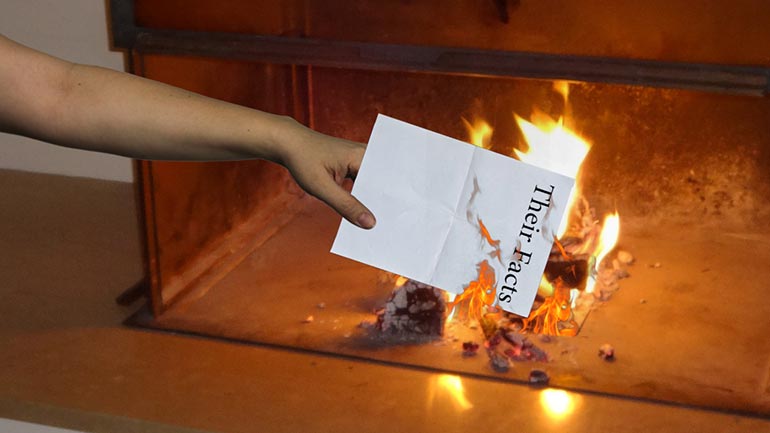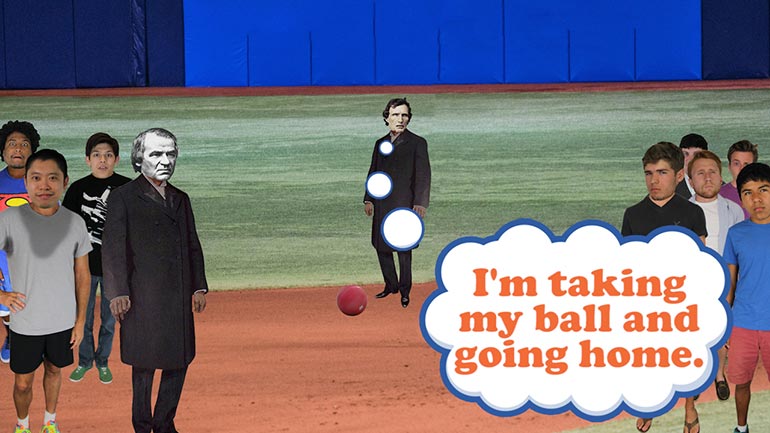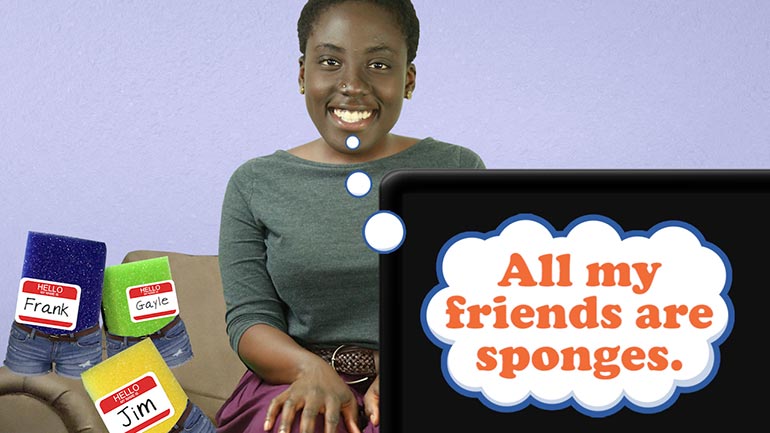ShmoopTube
Where Monty Python meets your 10th grade teacher.
Search Thousands of Shmoop Videos
Social Studies 5: The Middle Colonies 199 Views
Share It!
Description:
Today we'll learn about how the Quakers became movers and shakers. You know, when they moved to North America...and it got cold.
Transcript
- 00:04
[Coop and Dino singing]
- 00:13
Recognize this guy? Of course you do.
- 00:15
He's on that package of gross mush your dad keeps trying to feed you for breakfast. [Dad and son having breakfast]
- 00:19
Seriously, would it have killed him to swap in Lucky the Leprechaun every once in a while?
- 00:23
Anyway, Quaker Oats gets its name from a group of people known as the Quakers. [Quakers singing and dancing]
Full Transcript
- 00:27
The Quakers came to the English colonies in the late 1600s after the English government
- 00:31
started demanding that they worship the Church of England. [King Henry and priest stood outside a church]
- 00:33
And if your mom has ever demanded that you clean your room, and you'd rather do anything
- 00:37
else, then you kind of know how The Quakers felt.
- 00:39
So The Quakers arrived in the New World and established their own communities in what
- 00:43
are now New Jersey and Pennsylvania. [New Jersey and Pennsylvania on a map]
- 00:45
In fact, Pennsylvania is actually named after William Penn, who was a Quaker leader.
- 00:49
Kinda looks like the Quaker Oats guy….except… a little more constipated….[William Penn image]
- 00:53
Anyway, William Penn signed peace treaties with nearby Native tribes, created a system of government
- 00:57
for his colony, and made sure that everyone there was free to worship however they pleased.
- 01:01
In other words, Penn was a pretty cool dude, especially compared to the stunts a lot of [Colony soldiers on a ship]
- 01:05
the other colonists were pulling at the time.
- 01:08
That’s why he's honored in a statue atop
- 01:10
the clock tower of Philadelphia City Hall. [William Penn statue on a clock tower]
- 01:12
We hope Penn didn’t have a fear of heights. Meanwhile, the Dutch were busy buying the
- 01:15
part of New York City named Manhattan for 24 dollars. [Dutch man handing Native American 25 dollars]
- 01:18
Okay, that isn't entirely true. It is true that a Dutch official by the name of Peter
- 01:22
Minuit gave the Native Americans products worth about that much in exchange
- 01:25
for the land, but the idea of “owning land” wasn't something that Native Americans really
- 01:29
understood back then. [Man wearing a hat and gown]
- 01:30
You can’t really buy something when the people you’re buying it from have no concept
- 01:35
of a “purchase.”
- 01:36
They thought that Minuit was just was giving them gifts so that they would share Manhattan.
- 01:40
It all seemed very pleasant and nice. Until Minuit built a giant fort on the land
- 01:44
to keep out the Native Americans. [Minuit and native american beside a fort]
- 01:46
Well, more specifically, he wanted to keep out the not-so-friendly Native Americans.
- 01:49
The fort actually helped protect cooperative European and Native American traders alike.
- 01:53
So Minuit was pretty cool.
- 01:55
But not as cool as William Penn. Once the Dutch had Manhattan, they began bringing [Ship approaches Manhattan]
- 01:59
African slaves over to what they had since named New Amsterdam.
- 02:03
That’s before the English took it from them and renamed it what we know it as today, New York.
- 02:07
So the question remains, what did our two colonies, Pennsylvania and New York, have in common?
- 02:11
Well, they were both successful because they had good relations with local Native Americans, [Civillians and native americans discussing in a street]
- 02:15
they were well run, and they were in good locations for trading, starting businesses,
- 02:18
and growing crops.
- 02:19
We hope they traded plenty of oatmeal. Hopefully for some Lucky Charms. [Man trades oatmeal for lucky charms]
- 02:23
Seriously, we're still bitter… not even one Cocoa Puff…
Up Next
Check out the best bias video ever made, courtesy of the most awesome and amazing educational website in existence.
Related Videos
No, this isn't a terrible new mint-peach bubble gum flavor...though it does tend to leave a bad taste in people's mouths.
Those settlers in Jamestown really should have settled down with all that land-stealing. Tobacco's bad for you anyway.
Being born out of multiple wars doesn't quite seem to fit the peaceful, polite Canadians we know and love today...oh wait, they were called The Bea...
Not every cartoon is meant to entertain small children while their mother gets some "Mommy time." There are also political cartoons, which are mean...




